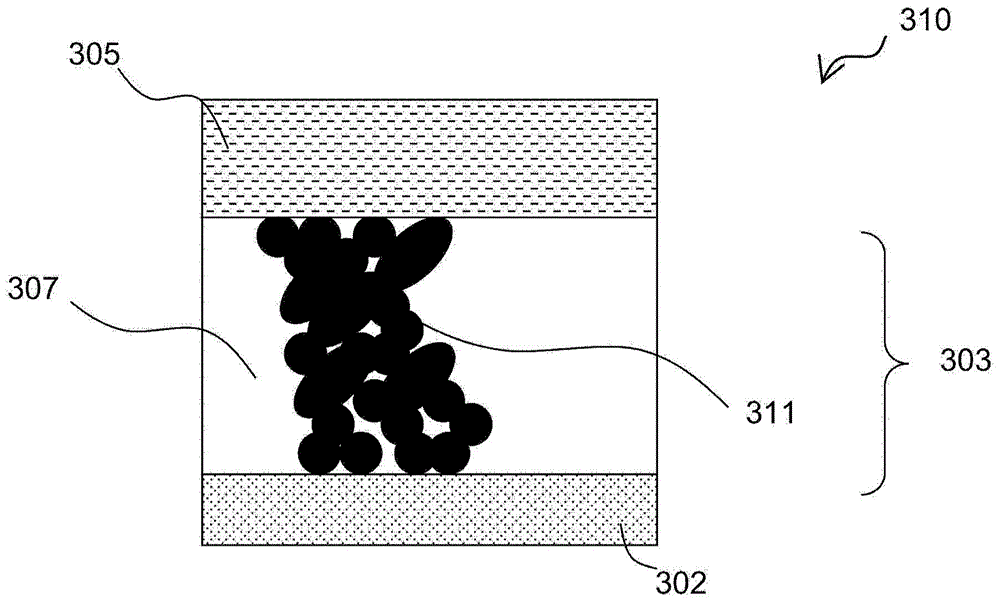Collector, electrode structure, nonaqueous electrolyte cell, and electricity storage component
A current collector and conductivity technology, which is applied in the fields of non-aqueous electrolyte batteries or power storage components, current collectors, and electrode structures, can solve the problems of separator melting and short circuit, and achieve the effect of sufficient conductivity
- Summary
- Abstract
- Description
- Claims
- Application Information
AI Technical Summary
Problems solved by technology
Method used
Image
Examples
Embodiment
[0090] Hereinafter, although an Example demonstrates this invention further, this invention is not limited to these.
[0091]
[0092] Based on Table 1, the coating amounts of various resins were mixed and used. As the olefin-based resins, aqueous emulsions having a solid content of 5 to 40% by weight were used. Based on the DSC chart of the coating film, the mixture of polypropylene and polyethylene in Example 18 was mixed so that the addition ratio of polypropylene became 50%.
[0093]All PVDF resins used N-methyl-2-pyrrolidone solutions with a solid content of 10 to 15% by weight. As the epoxy resin, a solution obtained by dissolving a bisphenol A resin and a urea resin in methyl ethyl ketone at a solid content of 20% by weight was used. As the polyester resin, a solution obtained by dissolving a polyester resin produced by an esterification reaction between isophthalic acid and ethylene glycol in xylene at a solid content of 20% by weight was used. As the polyurethane...
PUM
| Property | Measurement | Unit |
|---|---|---|
| Adhesion amount | aaaaa | aaaaa |
| electrical resistance | aaaaa | aaaaa |
Abstract
Description
Claims
Application Information
 Login to View More
Login to View More - R&D
- Intellectual Property
- Life Sciences
- Materials
- Tech Scout
- Unparalleled Data Quality
- Higher Quality Content
- 60% Fewer Hallucinations
Browse by: Latest US Patents, China's latest patents, Technical Efficacy Thesaurus, Application Domain, Technology Topic, Popular Technical Reports.
© 2025 PatSnap. All rights reserved.Legal|Privacy policy|Modern Slavery Act Transparency Statement|Sitemap|About US| Contact US: help@patsnap.com



